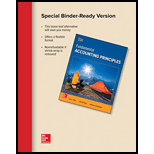
Introduction:
Common Size Comparative Statements
• Common size statements are comparative financial statements that facilitate data analysis and comparison of the financial results with the results of previous time periods.
• While preparing a common size financial statement, the elements of the financial statements such as expenses, costs and net results (
• The individual cost elements are then analyzed and year on year analysis is performed in order to check if the growth in revenues correspond to a matching proportionate increase and vice versa.
• The main purpose of common size financial statements is to enable comparison with results of previous financial time periods and also facilitate tracking and review.
Trend Percentage Analysis
• Trend Percentage Analysis is a technique of performance measurement and evaluation where the performance of the current year is compared to that of a base year and the direction of the results are analyzed.
• The movement of the results can be interpreted as a positive or favorable trend or as a negative or unfavorable trend.
• Favorable trends mean increase in revenues and decrease in costs and are hence subjective in nature. Unfavorable trends mean decrease in revenues and increase in costs and are also subjective in nature.
• Trend analysis helps in evaluation of repetitive behavior as well as evaluation of effectiveness of strategies implemented by allowing analysis of performance over time.
• The following formula is used to calculate trend percentage for each year:
To Determine:
If income increases, decreases or remains unchanged over a 3 year period.
Want to see the full answer?
Check out a sample textbook solution
Chapter 17 Solutions
Loose Leaf for Fundamental Accounting Principles
- Please provide the correct answer to this general accounting problem using valid calculations.arrow_forwardUnder absorption costing the ending inventory for the year would be valued at:arrow_forwardI am searching for the accurate solution to this financial accounting problem with the right approach.arrow_forward
- Please explain the solution to this financial accounting problem with accurate principles.arrow_forwardCan you solve this general accounting problem using appropriate accounting principles?arrow_forwardPlease provide the correct answer to this financial accounting problem using valid calculations.arrow_forward

 AccountingAccountingISBN:9781337272094Author:WARREN, Carl S., Reeve, James M., Duchac, Jonathan E.Publisher:Cengage Learning,
AccountingAccountingISBN:9781337272094Author:WARREN, Carl S., Reeve, James M., Duchac, Jonathan E.Publisher:Cengage Learning, Accounting Information SystemsAccountingISBN:9781337619202Author:Hall, James A.Publisher:Cengage Learning,
Accounting Information SystemsAccountingISBN:9781337619202Author:Hall, James A.Publisher:Cengage Learning, Horngren's Cost Accounting: A Managerial Emphasis...AccountingISBN:9780134475585Author:Srikant M. Datar, Madhav V. RajanPublisher:PEARSON
Horngren's Cost Accounting: A Managerial Emphasis...AccountingISBN:9780134475585Author:Srikant M. Datar, Madhav V. RajanPublisher:PEARSON Intermediate AccountingAccountingISBN:9781259722660Author:J. David Spiceland, Mark W. Nelson, Wayne M ThomasPublisher:McGraw-Hill Education
Intermediate AccountingAccountingISBN:9781259722660Author:J. David Spiceland, Mark W. Nelson, Wayne M ThomasPublisher:McGraw-Hill Education Financial and Managerial AccountingAccountingISBN:9781259726705Author:John J Wild, Ken W. Shaw, Barbara Chiappetta Fundamental Accounting PrinciplesPublisher:McGraw-Hill Education
Financial and Managerial AccountingAccountingISBN:9781259726705Author:John J Wild, Ken W. Shaw, Barbara Chiappetta Fundamental Accounting PrinciplesPublisher:McGraw-Hill Education





